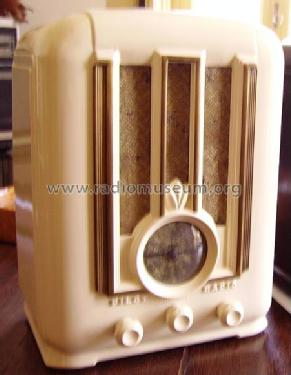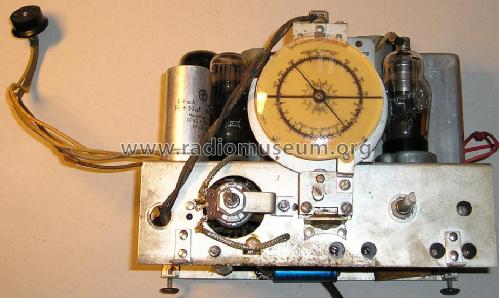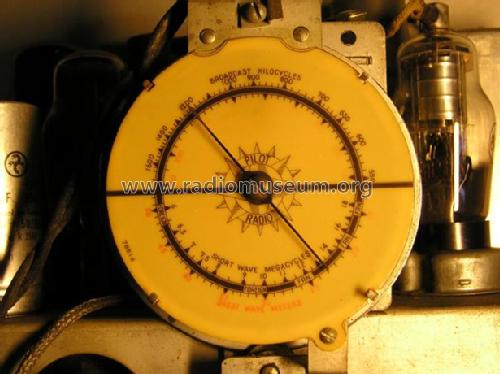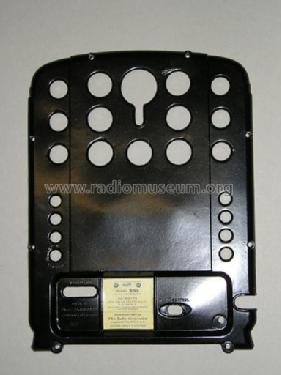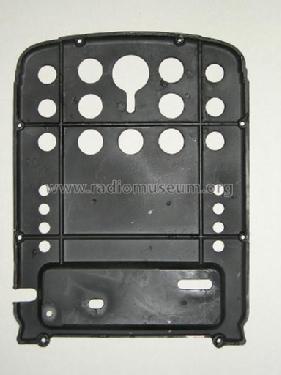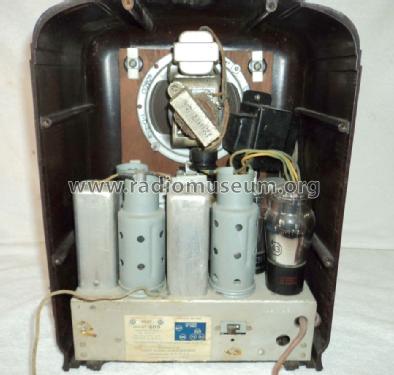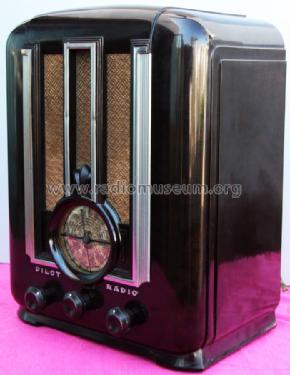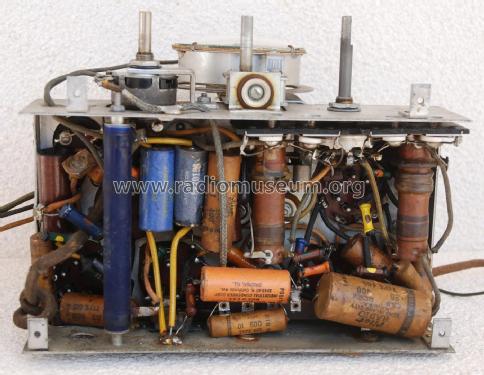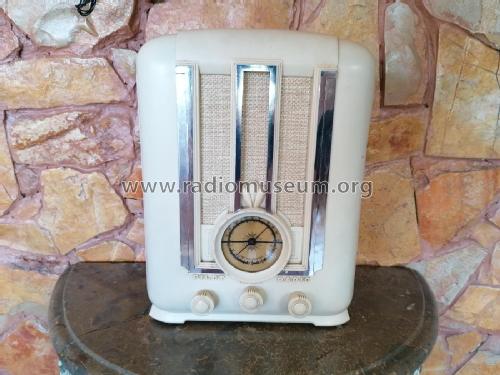- Produttore / Marca
- Pilot Electric Mfg. Co. (Radio Corp.); Brooklyn (NY)
- Anno
- 1936
- Categoria
- Radio (o sintonizzatore del dopoguerra WW2)
- Radiomuseum.org ID
- 112982
-
- alternative name: Pilot Radio & Television || Pilot Radio and Tube || Pilot Radio Corporation
Clicca sulla miniatura dello schema per richiederlo come documento gratuito.
- Numero di tubi
- 5
- Principio generale
- Supereterodina (in generale); ZF/IF 456 kHz
- Gamme d'onda
- Onde medie (OM) e corte (OC).
- Tensioni di funzionamento
- Alimentazione universale (doppia: CC/CA) / 115 Volt
- Altoparlante
- AP elettrodinamico (bobina mobile e bobina di eccitazione/di campo) / Ø 5 inch = 12.7 cm
- Potenza d'uscita
- 1 W (qualità ignota)
- Materiali
- Bachelite
- Radiomuseum.org
- Modello: 203 [75 tube] - Pilot Electric Mfg. Co. Radio
- Forma
- Soprammobile verticale con decorazioni (Tombstone).
- Dimensioni (LxAxP)
- 9.3 x 12.6 x 7.1 inch / 236 x 320 x 180 mm
- Annotazioni
- The dial does not bear stationized call letters. Chrome trim around the speaker grille. There is also model 203 using a 76 tube and other X203 models.
- Fonte dei dati
- -- Collector info (Sammler)
- Riferimenti schemi
- Rider's Perpetual, Volume 18 = 1949 and before
- Bibliografia
- Machine Age to Jet Age II
- Letteratura / Schemi (1)
- Autore
- Modello inviato da Konrad Birkner † 12.08.2014. Utilizzare "Proponi modifica" per inviare ulteriori dati.
- Altri modelli
-
In questo link sono elencati 544 modelli, di cui 271 con immagini e 408 con schemi.
Elenco delle radio e altri apparecchi della Pilot Electric Mfg. Co. (Radio Corp.); Brooklyn (NY)
Collezioni
Il modello 203 fa parte delle collezioni dei seguenti membri.
Discussioni nel forum su questo modello: Pilot Electric Mfg.: 203
Argomenti: 4 | Articoli: 14
I do not know who to whom I should raise this issue, therefore I apologige for my in advance this.
I do not understand what the reason for the existence of this sheet scheme to which the audio output tube is a 25L6, having all these radios, (photos), the audio output tube in tube they all a 43?
Thank's
A good 2014
Best regards
Júlio Branco
Júlio Branco, 10.Jan.14
Dear All,
In Classic Gallery I found some more information about Pilot 203.
Classic Gallery says that Pilot X203 is the original one. At the beginning this model had no chrome trims (friezes). http://classicradiogallery.com/radiopages/pilotx203.html
About Pilot 203, Classic Gallery says that it is an export model which has no stationized call letters and has different knobs.http://classicradiogallery.com/radiopages/pilot203.html
I think that, at last, these two differences are enough to identify these two different models
I hope this information can help.
Best Regards
Mário Coelho
Mario Coelho, 03.Sep.07
To use early and late would not help. A collector looking for info in RM would never find such a hint on his radio. In our case here the tubes are unambiguous means to discriminate.
In addition "early" and "late" as found in some Sylvania Service notes are in doubt insofar, as both versions are noted for the same year 1936 (Riders vs. Machine Age).
Konrad Birkner † 12.08.2014, 19.May.07
Dear Radio Friends,
Our continuous team search work in order to find out the reasons of some discrepancies brought us out some good news about those two different Pilot 203 versions named by Rmorg :"Pilot 75 tube" & "Pilot 76 tube".
Yesterday, José Duarte Costa shows me a book: "Tube Complement Book with IF-Peaks" From Sylvania. 1938-1939.
Here is a piece of it:

This book also consider two variants of this Pilot 203.
But, it calls them differently. It call them "Early" and “Late”.
It means that these two versions had a chronologic manufacturing sequence. It was not an error of manufacturing or a temporary 76 tube stock break...
First, Pilot manufacturer produced an Early Pilot 203 . Afterwards Pilot produced a Later Pilot 203. Tube series were different.
Why not us,to call these model variants ”Early" and "Later" too, instead of 76 and 75?
Do You agree?
Best Regards
Mário Coelho
Mario Coelho, 17.May.07




